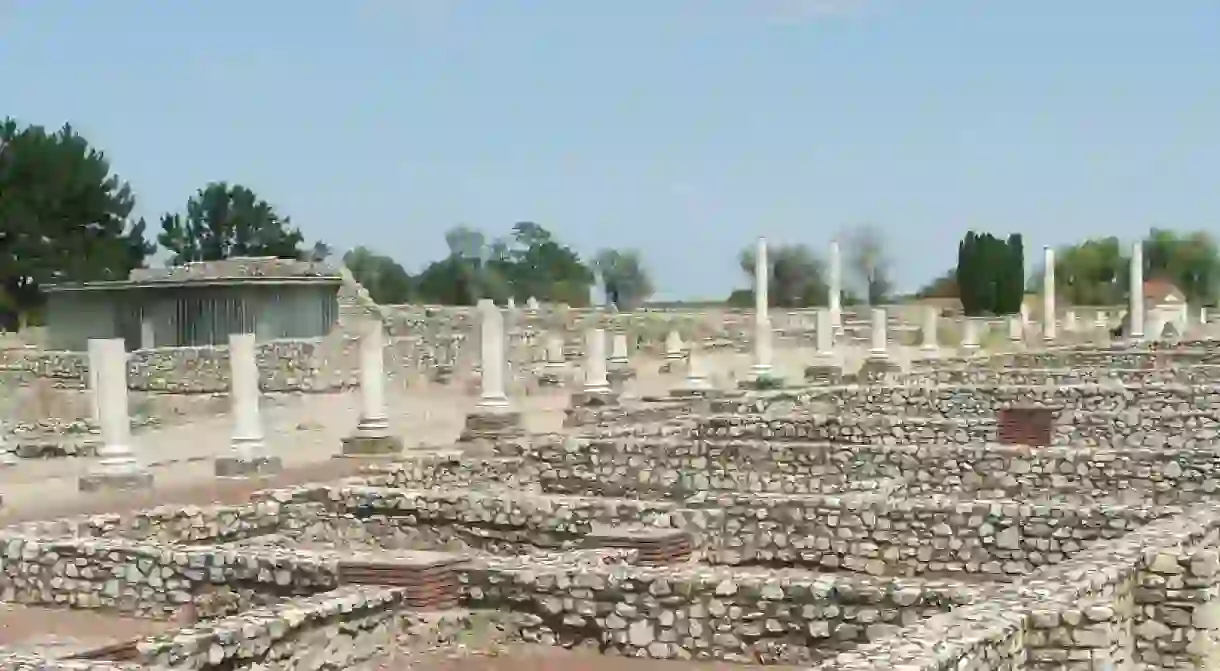16 Archaeological Discoveries Made in Hungary

With a rich history including periods of rule by the Roman and Ottoman Empires, Hungary is home to plenty of fascinating archaeological sites. From Roman forts to hidden towns and mummified forests, join us as we take a look at 16 of the most interesting archaeological discoveries made in Hungary.
The Danube Limes
Aquincum
Originally established by the Celtic Eravisci tribe between 41 – 54 AD, the city of Aquincum is best known for its function as the capital of Pannonia Inferior, a Roman border province on the Danube. The site once formed part of the Danube Limes, a defensive border built by the Romans to protect their vast empire. In 1778, a Hungarian winegrower stumbled upon part of its remains, setting in motion a series of archaeological discoveries on the site. Today, Aquincum can be visited through the Aquincum Museum in Budapest.
Aquincum Museum, Szentendrei út 135, Budapest, Hungary, +36 1 430 10 81

Tokod Roman Fort
Excavation of this late Roman fort began in 1893 and, over the years, further digs and projects have revealed a number of elements such as walls, towers, and a warehouse building. Part of the Pannonian Limes, protecting the Roman province of Pannonia, the fort can be found close to the town of Tokod and can be explored freely by visitors.
Sibrik-domb Roman Fort, Visegrád
Close to Budapest, the town of Visegrád is home to a number of interesting architectural and archaeological sites – including a late Roman fort built as part of the Limes. Much of the fort’s layout and structures can be seen today thanks to excavation efforts throughout the 20th century, including curtain walls and interior buildings.
Lussonium Roman Fort
An archaeological park along the Danube Limes, the Roman fort of Lussonium comprises a number of reconstructed buildings, from living quarters to the north and south gates. Visitors can explore the area at leisure, while a number of artifacts discovered during excavation of the site can be seen in the Paks City Museum.
Lussonium Romkert, Bottyán-sánc, Paks, Hungary, +36 75 510 448

Dodecahedral Roman Artifacts
A hollow dodecahedral shaped bronze or stone artifact, the function of the Roman dodecahedron being unknown to this day, leaves room for speculation as to its purpose. Candle holders, dice, and religious symbols are all suggestions that have been put forward. A number of these mysterious items have been found in Hungary, allowing further investigation as to their true function.

Turbek

Bükkábrány mummified forest
Forest, Park
Gorsium Archaeological Park
Museum, Park

Százhalombatta-Földvár
Christian Necropolis of Pécs

Üllő5
The Iseum

Medieval Jewish Chapel
The Hungarian National Museum
Building, Museum

Between 1541 – 1699, the Ottoman Empire ruled over Hungary, and a number of artifacts from this period have been discovered in the country, with both practical and decorative items providing an insight into Hungary’s Ottoman history. Many of these can now be seen at the Hungarian National Museum.
The Prehistoric Collection
Showcasing pieces from a number of historic periods, from the Old and New Stone Ages to the Iron Age, a number of items discovered in Hungary over the years are featured in the National Museum’s Prehistoric Collection. Excavations since the 19th century have revealed a significant number artifacts such as jewelry and weapons, allowing the museum to build up an important collection of archaeological finds and to offer a deeper look into Prehistoric Hungary.
The Great Migrations Period
Formed of pieces recovered from a period of significant migration in Hungary’s early history, in which groups such as the Huns, the Avars, and the Lombards migrated across the Carpathian Basin, this collection boasts over 100,000 pieces. Rich artworks such as a Hunnish diadem found in the western Hungarian town of Csorna, as well as many items discovered in cemeteries, can be seen in the extensive exhibition.













